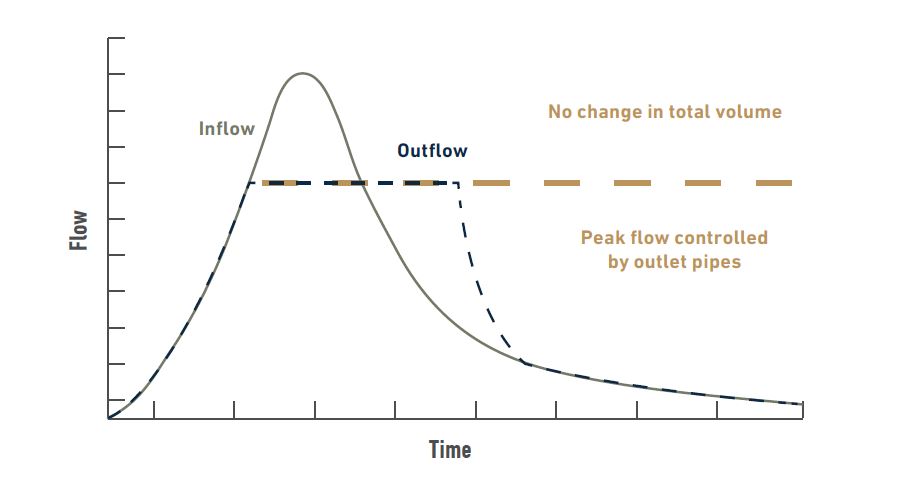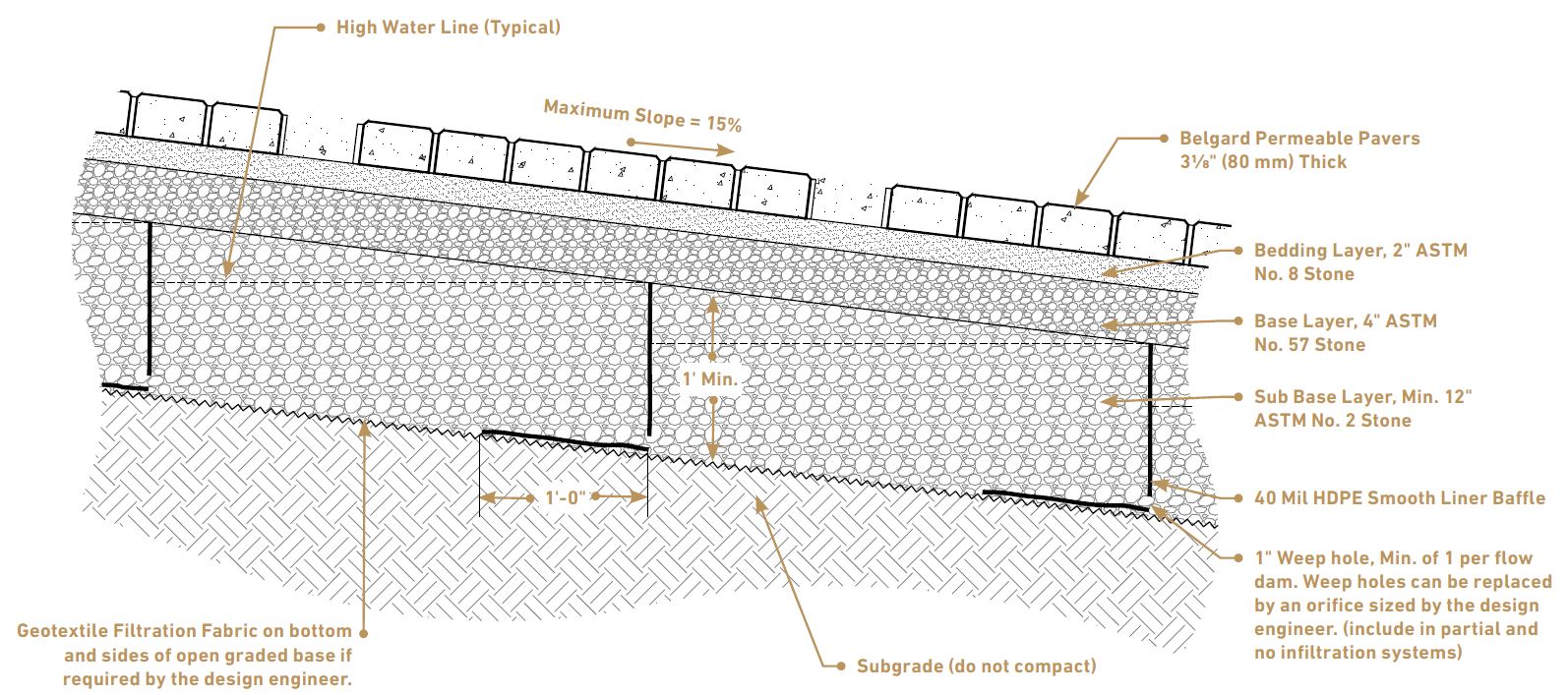Why Is Stormwater Runoff A Problem?
Unmanaged stormwater runoff can cause excessive erosion, flooding, and contamination of lakes, rivers, and surface water supplies of drinking water. The pavers’ drainage, therefore, needs to be controlled.
Unmanaged stormwater runoff can cause excessive erosion, flooding, and contamination of lakes, rivers, and surface water supplies of drinking water. The pavers’ drainage, therefore, needs to be controlled.
Traditional site design has focused on estimating the peak runoff rate from large, but less frequent, extreme storm events (or how much stormwater runoff is leaving the site under worst case conditions) to ascertain if the receiving body, be it a river or stormwater collection system, can handle the anticipated flow.
Detention facilities are built to slow down the rate of runoff to levels the receiving body can handle, with the outflow from the pond being controlled by the diameter and number of outlet pipes; the discharge rate can be calculated using a standard orifice equation.

On sloped sites, periodic benches are used to create a series of storage reservoirs that slow the water flow – this prevents all of the water from flowing down to the low end and overflowing out of the joints of pavers, resulting in drainage. The flow from each storage reservoir is controlled by the size and number of openings in the respective check dam.
